User’s guide to ePO example 2:How many contract winners are SMEs for a chosen country and date?
Before reading this example, please visit the Conceptual Model and Glossary guides.
This query aims to find the procurement notices specific to publication date, country code (Germany), and business size (SME - Small Medium Enterprises).
-
Publication date can be found on the Notice Class, and country code and business size can be found on the Organisation class, that is also the winner for that notice.
-
First we need to locate the Notice class in the the ePO core conceptual model.
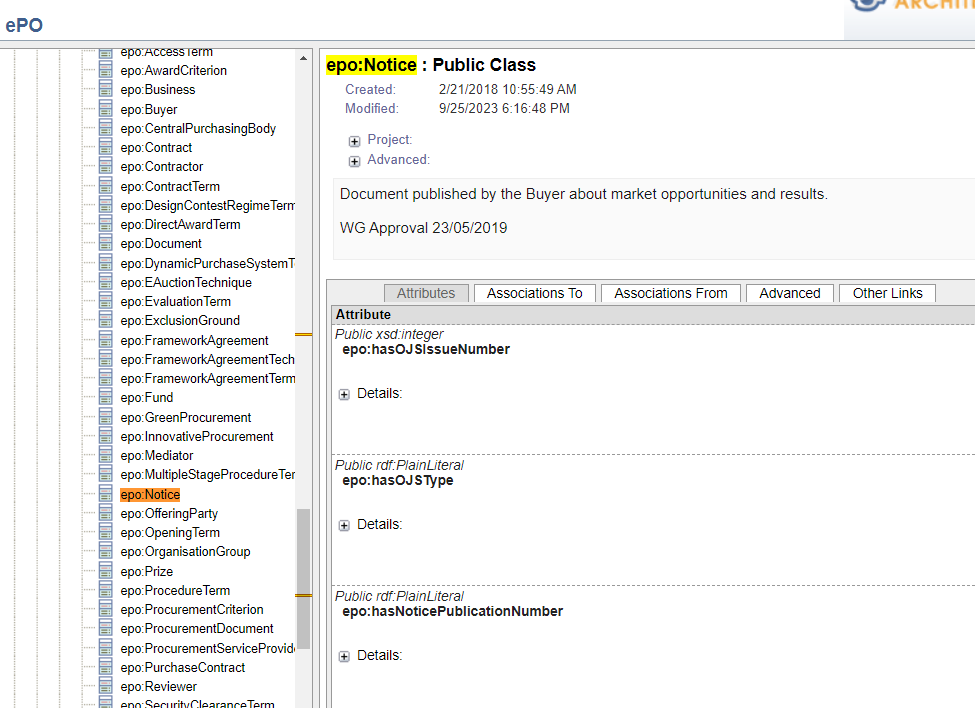
Figure b1: epo:Notice in the ePO core.
-
Then we need to locate an attribute or predicate that will give us the publication date. After some searching, we find the information we want on the "documents hierarchy" diagram.

Figure b2: Searching for the correct diagram.
-
As seen in figure b3, epo:hasPublicationDate is an attribute of Class epo:Document which is a generalisation of Class epo:Notice.
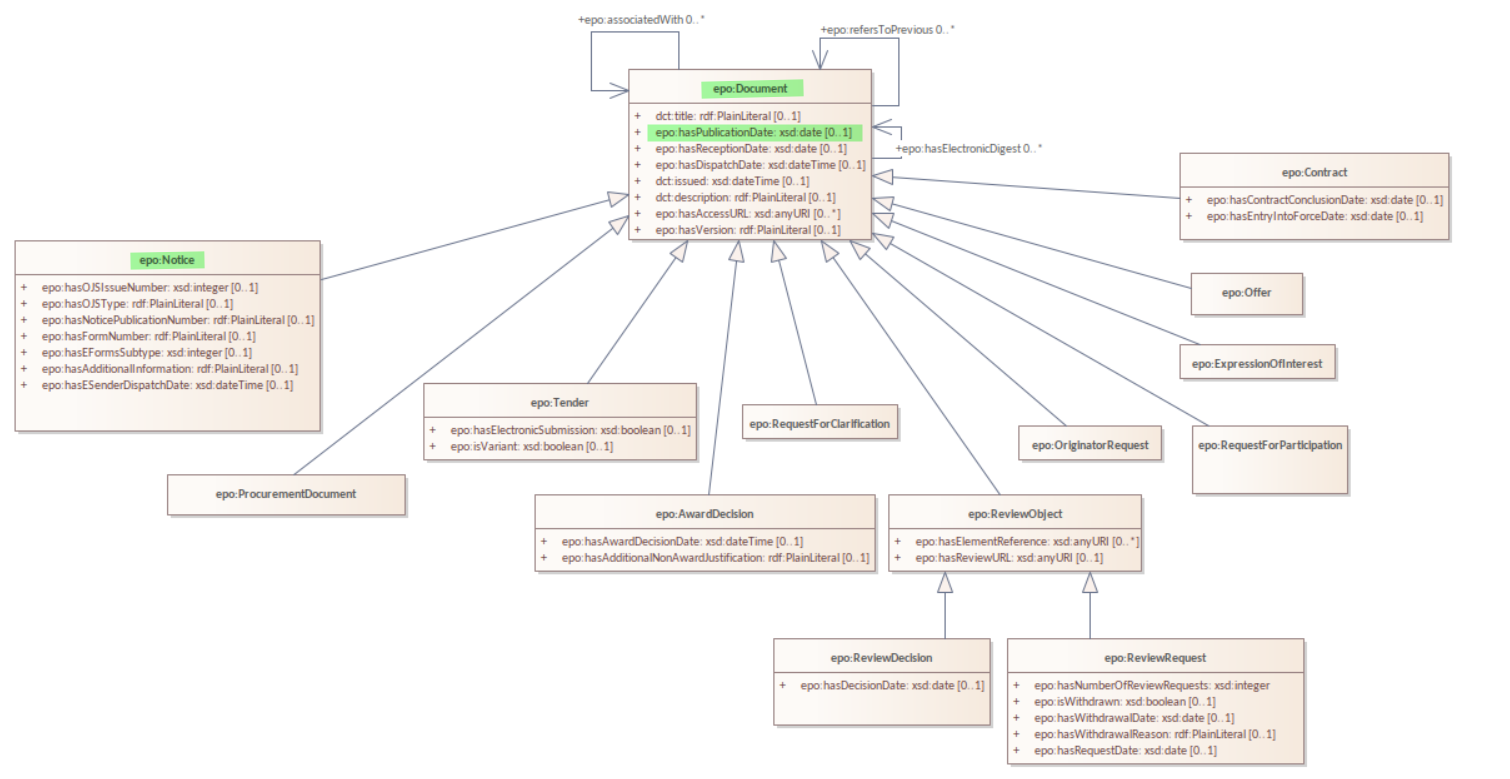
Figure b3: epo:hasPublicationDate is an attribute of epo:Document
-
Now we need to find a connection between epo:Notice and epo:Winner. There are several ways to tackle the problem. Here we are going to find a connection from epo:Notice to epo:Tender through the "procedure and lot relations" diagram (figure b4), and then from epo:Tender to epo:Winner through the "award decision outcome relations" diagram (figure b5).
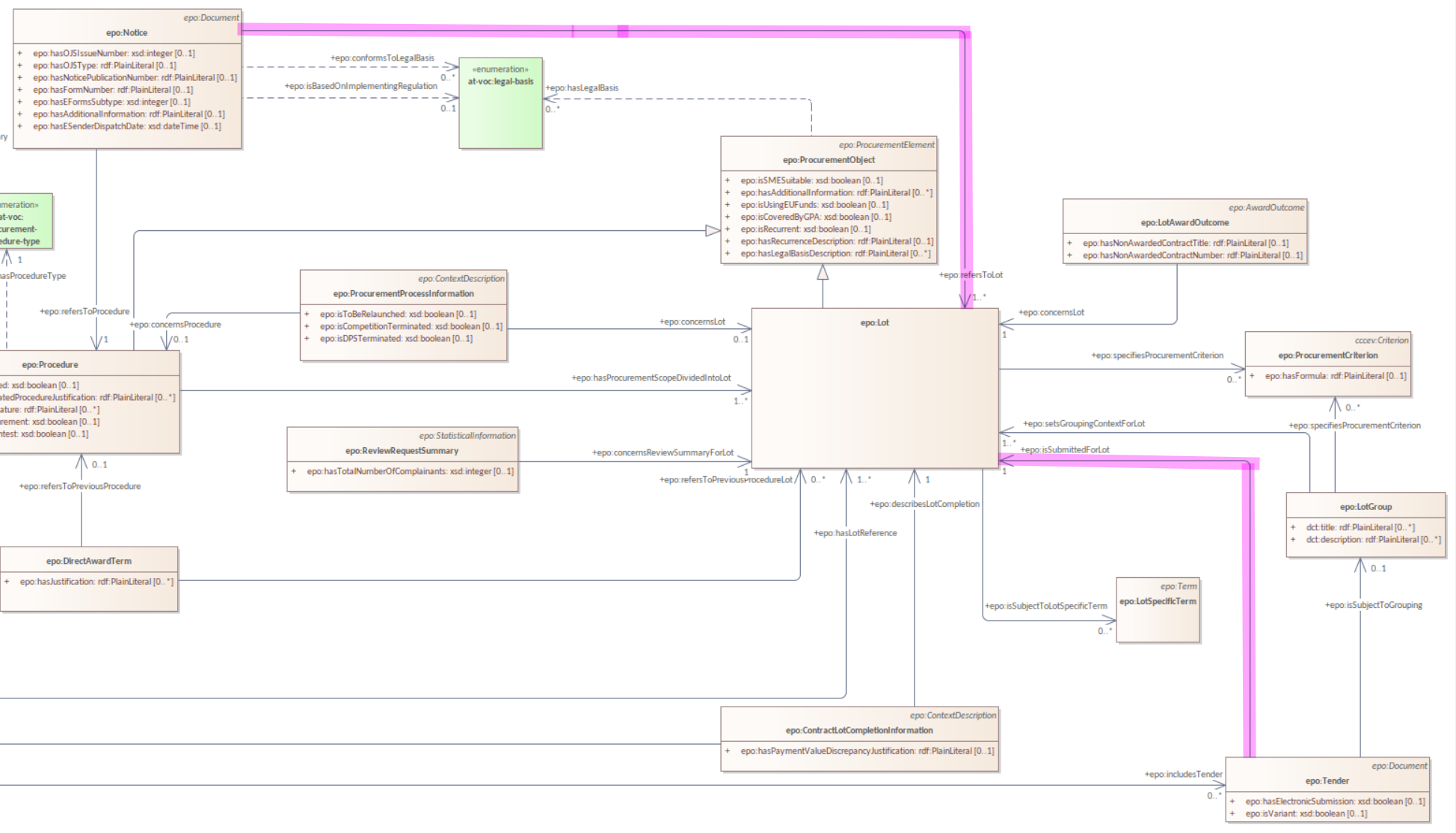
Figure b4: On the "procedure and lot relations" diagram we can see that there is a connection from epo:Notice to epo:Tender through epo:Lot
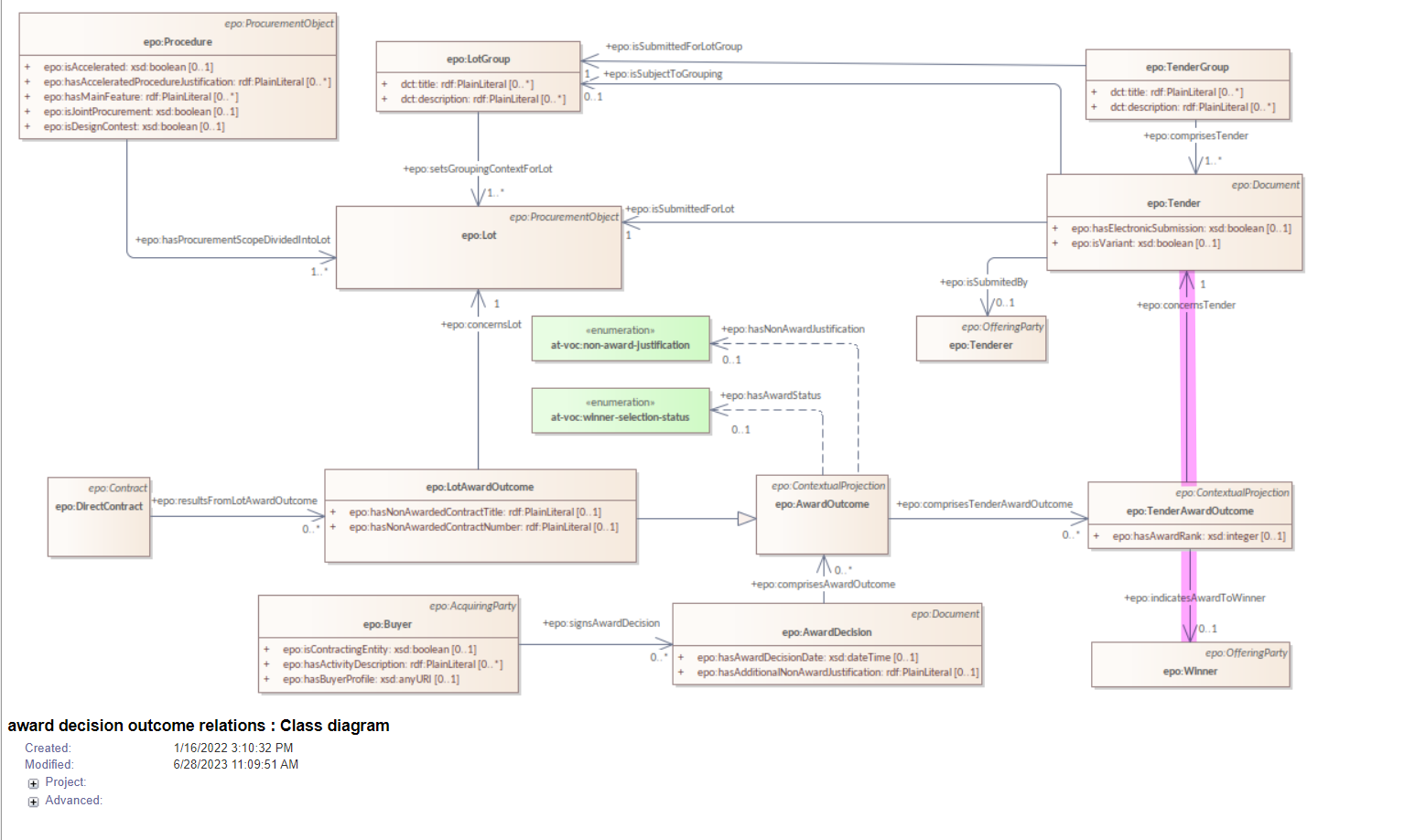
Figure b5: On the "award decision outcome relations" diagram we can see that there is a connection from epo:Tender to epo:Winner through epo:TenderAwardOutcome
-
As we can see in figure b6, (role hierarchy diagram) epo:Winner is a specialisation of epo:OfferingParty, which in turn is a specialisation of epo:AgentInRole.
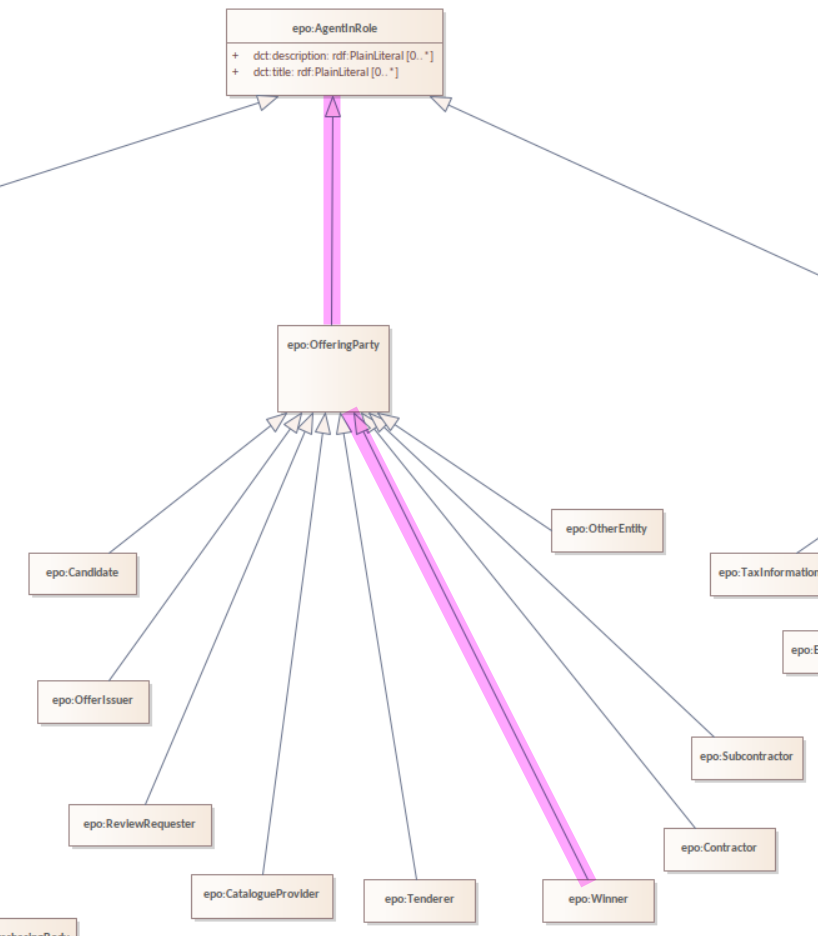
Figure b6: Generalisation of the epo:Winner role on the "role hierarchy diagram"
-
As seen in figure b7, epo:AgentInRole is played by an agent of class foaf:Agent, which is a generalisation of org:Organization class which in turn is a generalisation of class epo:Business. Here, in order to find the size of the business, we use the epo:hasBusinessSize dependency to access the at-voc:economic-operator-size codeList. This list provides the different categories in which the Tenderers, to whom a Contract can be awarded, are classified, according to their size (using as Criteria the number of employees).
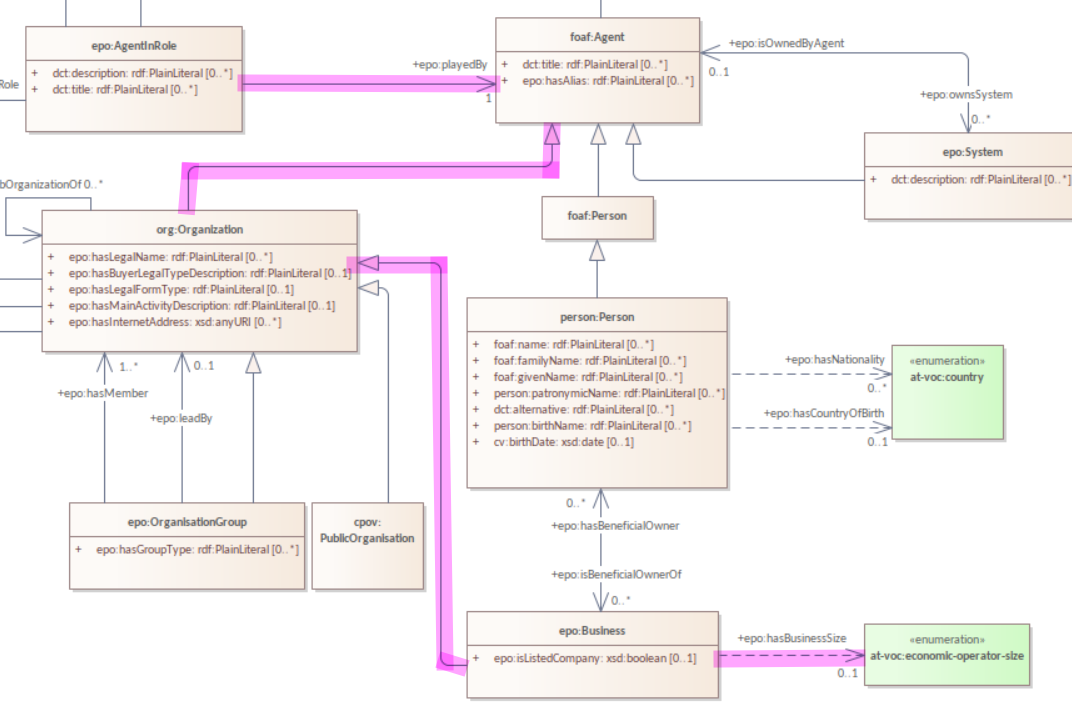
Figure b7: Connection from epo:Agent InRole to org:Organization and epo:Business classes on the "agent relations" diagram
-
Finally, in order to find the country of the Business, we go back to the org:Organization class, and look at the location diagram (figure b8). There are 2 ways to access the country: The first is the locn:adminUnitL1 attribute of locn:Address, and the second is to use the codelist at:voc:country, which is linked to locn:Address through the epo:hasCountryCode dependency.

Figure b8: Connection from org:Organization to at-voc:country via the Location diagram